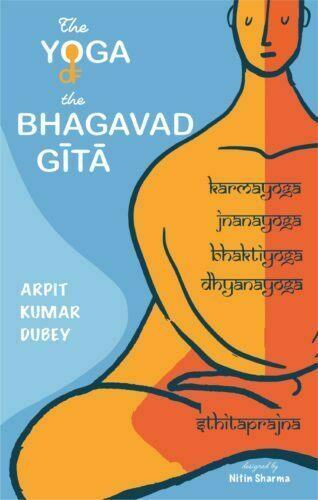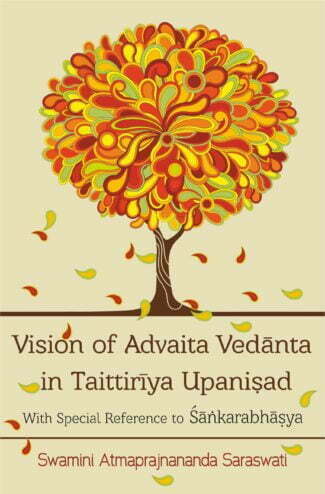Showing 21–26 of 26 results

This volume presents the translation and interpretation of thirteen principal Upanisads such as Brhadaranyaka, Chandogya, Taittiriya, Aitareya, Kausitaki, Kena, Katha, Isa, Mundaka, Prasna, Mandukya, Svetasvatara and Maitri along with the outline of the philosophical wisdom inherent in these Upanisads. It also features the recurrent and parallel passages in these principal Upanisads and the Bhagavadgita.
Upanisads are an authoritative compendium of Indian metaphysics. They represent the earnest efforts of profound thinkers of early India to solve the problems of origin, nature, and destiny of man and the universe, more technically the meaning and value of knowing and being. They are replete with sublime conceptions and with intuitions of universal truth. These Upanisads sets forth two opposing theories: one of mundane life and the other relating to a life that is in search of the Supreme Reality and man’s ultimate aim.
Though, traditionally, 108 Upanisads are well known and subject to various studies, there are around 200 Upanisads in toto. Of them, this volume contains the translation and interpretation of thirteen principal Upanisads such as Brhadaranyaka, Chandogya, Taittiriya, Aitareya, Kausitaki, Kena, Katha, Isa, Mundaka, Prasna, Mandukya, Svetasvatara and Maitri along with the outline of the philosophical wisdom inherent in these Upanisads. It also features the recurrent and parallel passages in these principal Upanisads and the Bhagavadgita.

It vividly and graphically presents the key concepts of the Bhagavadgita while majorly discussing the concepts like atman, Paramatman, jagat, karma-yoga, jnana-yoga, bhakti-yoga, dhyana-yoga, sthitaprajna, sadhakas’ challenges and the ways out.
This volume covers all the aspects of Yoga and self-management discussed in the Bhagavadgita –– a comprehensive text of personal and professional life management and adhyatma-sadhana (spiritual upgradation). What makes the book special is its dialogue format between a guru and his disciple as exactly what we witness in the Bhagavadgita as between Sri Krsna and Arjuna.
It vividly and graphically presents the key concepts of the Bhagavadgita while majorly discussing the concepts like karma-yoga, jnana-yoga, bhakti-yoga, dhyana-yoga, sthitaprajna, and seven keys of self upgradation, which leads towards Health, Happiness and Harmony, challenges and the ways out.
This book will help in the making broader understanding of the concepts and philosophy of the Bhagavadgita, which transcends time and space, to register with the new generation readers and thereby emulate and practise the varied forms of Yoga.
Tirumalamba, a poetess of the Vijayanagara Empire, wrote the Varadambikaparinayam, the story of marriage of King Acyuta Deva Rāya, in Sanskrit which forms the 5th volume of the series: Women Writings in Sanskrit.
In the court of King Acyutaraya (1529-42 CE) of Vijayanagara there was a poetess of great merit and her name was Oduva Tirumalamba. She was employed as a reader in the royal court whose duty was perhaps the reading of poetical and other compositions to the ladies of the royal family as well as to the royal court. Tirumalamba was popularly known as Oduva (reader) Tirumalamba. Evidently she was a genius, since she was an excellent musician and grammarian, possessing in addition a good command of rhetoric and diction. She was a scholar of Hindu epics, poetry, drama and philosophy and had other accomplishments also; she was a linguist and could write in many scripts. In addition to all these excellent qualities she must have possessed great beauty, for King Acyutaraya became so enamoured of her that he elevated her to the position of his queen (Rajamahisi).
We learn most of these details from the epilogue to the Varadambika-parinaya-campu, celebrating the wedding of King Acyutaraya and his senior queen Varadambika. It is learnt from epigraphical and other sources that Varadambika was the principal queen (Pattamahisi) of King Acyutaraya. We also learn from the epilogue to the campu that she was a patroness of learned priests, scholars and poets and that she made liberal gifts and endowments to temples and religious institutions.
This poem also describes the birth of Prince Venkatadri, the first born of Varadambika. But it cannot be denied that the work shows that Tirumalamba was a highly educated woman, who wrote for the cultured.
“The present book intends to highlight universal Vedic vision and provide an overview of ennobling ideas enshrined in the four Vedas. It contains select Vedic mantras in Sanskrit , with Hindi and English translation, which solicit peace and welfare for all beings in the world. Vedic prayers compiled in this book have been divided under following eight headings: One Earth-One Family, Peace, Well-being, Nature/Environment, Friendship/Amity, Education, Feminine Power and Culture. Besides, a basic introduction to Vedic literature is appended in the beginning so that the readers may grasp a glimpse of the vastness and variety of Vedic texts and also understand the enormous influence of Vedas on the subsequent development of Indian thought. It is hoped that the simple but significant message of Vedas like seeing inherent interconnectedness among all beings inhabiting the planet earth and seeking cosmic harmony can provide fresh insights for the future of humanity. “

This book unveils the vision of Advaita Vedanta in Taittiriya Upanishad with special reference to Shankarabhashya in a unique style, detailing the importance of shabda-pramana, along with free translations of three vallis of the Upanishad. It presents the oneness of triangular phenomenon called jiva, jagat and Ishvara from the Advaita Vedanta perspective.
This book unveils the vision of Advaita Vedanta in Taittiriya Upanishad with special reference to Shankarabhashya in a unique style. Upanishads are shabda-pramana, and this work adequately details the six pramanas, which hold the key to understand the significance of shabda-pramana, along with the five shanti-mantras in Taittiriya Upanishad. As the crux, it analyses Shankaras commentary Taittiriya-Bhashyam on Taittiriya Upanishad, enabling one to understand the deep layers of Advaita Vedanta in detail.
The core theme Vision of Advaita in Taittiriya Upanishad discusses the oneness of the triangular phenomenon called jiva, jagat and Ishvara. It delves deep into the method of deciphering the mahavakyas as well. While following closely the source literature, this volume attempts to detail the nuances of Taittiriya-Bhashyam. The approach of navigating the reader to the principal theme of Advaita Vedanta is expected to give him/her a good background. In ensuring this the volume provides relevant citations and informative explanatory notes. More importantly, it across three vallis Shikshavalli, Brahmanandavalli and Bhriguvalli provides free translations of Taittiriya Upanishad.
This elaborate and scholarly book is expected to add great value to students who wish to have a better understanding of the great Indian tradition called Advaita Vedanta.

The Svayambhū Purāṇa , an important text on Nepalese Buddhism, stands as a testament to the rich spiritual and cultural heritage of the medieval Nepal Valley. It brings to life a vivid panorama of legends, each contributing to the religious identity and historical narrative of the region.
The Svayambhū Purāṇa is an important text on Nepalese Buddhism, magnifying the shrine of Svayambhū. Its content is believed to have been delivered as a sermon by Śākyamuni Buddha on the Mañjuśrī Hill.
The volume deliberates on ten key points such as the narrative of the self-generated birth of the Svayambhū; mention of the Vipaśvī, a primordial Buddha; the emergence of a radiant and bejewelled lotus from the dark waters of the lake, foreshadowing the eventual manifestation of the Buddha’s shrine (caitya) at its core; delineation of devotional practices and religious observances; civilization of Mañjuśrī; and so on.
The Svayambhū Purāṇa stands as a testament to the rich spiritual and cultural heritage of the medieval Nepal Valley and unveils the sophisticated nature of Newar Buddhist Sanskrit literary output of the fifteenth century. It brings to life a vivid panorama of legends, contributing to the religious identity and historical narrative of the region. It holds an enduring influence on the religious beliefs and practices of the Newar Buddhist community. This volume, in a nutshell, is an enhancement in the accessibility of the text.